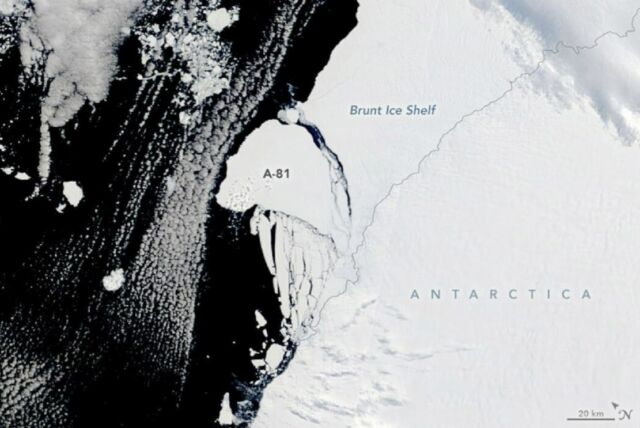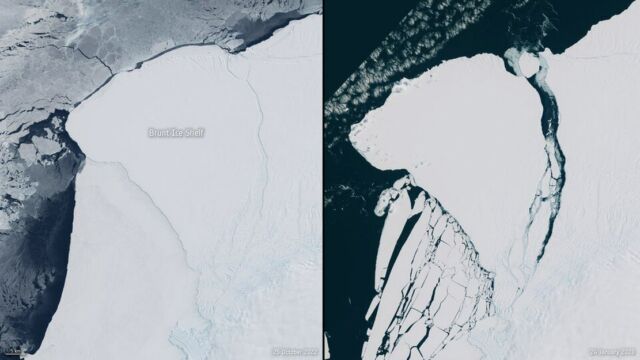A huge iceberg (1550 km²), almost the size of Greater London, breaks away from Antarctic ice shelf.
The enormous iceberg 1550 sq km and around 150 m thick, around five times the size of Malta, has finally calved from Antarctica’s Brunt Ice Shelf.
The new gigantic berg is estimated to be calved when the crack known as Chasm-1 fully extended northwards severing the western part of the ice shelf.
According to the British Antarctic Survey (BAS), the break occurred late on January 22, 2023, and produced a new iceberg with an area of 1550 square kilometers (about 600 square miles). The U.S. National Ice Center has named it Iceberg A-81.
The crack was first revealed to be extending in early 2012 after having been dormant for some decades.
Image data from the Copernicus Sentinel missions visually confirm the calving event.
ESA’s Mark Drinkwater said, “After several years of iceberg calving watch, the long-awaited separation of the Brunt iceberg A81 has finally taken place. The northward propagation of Chasm 1 and timely decision for BAS to move the Halley Base to safer ground have been accompanied by what has been perhaps the most detailed and longest-duration scrutiny of events leading to natural calving from an Antarctic ice shelf.
“Thanks to Copernicus, coupled with in-situ and airborne measurements made by the British Antarctic Survey, the safety of the Halley Base has been preserved. Meanwhile, the combination of summer images from Sentinel-2 and availability of year-round and winter monitoring by Sentinel-1 radar placed the pattern of strain and propagation of an ice shelf fracture under the worldwide public microscope.”
Images credit ESA
source the British Antarctic Survey







Leave A Comment